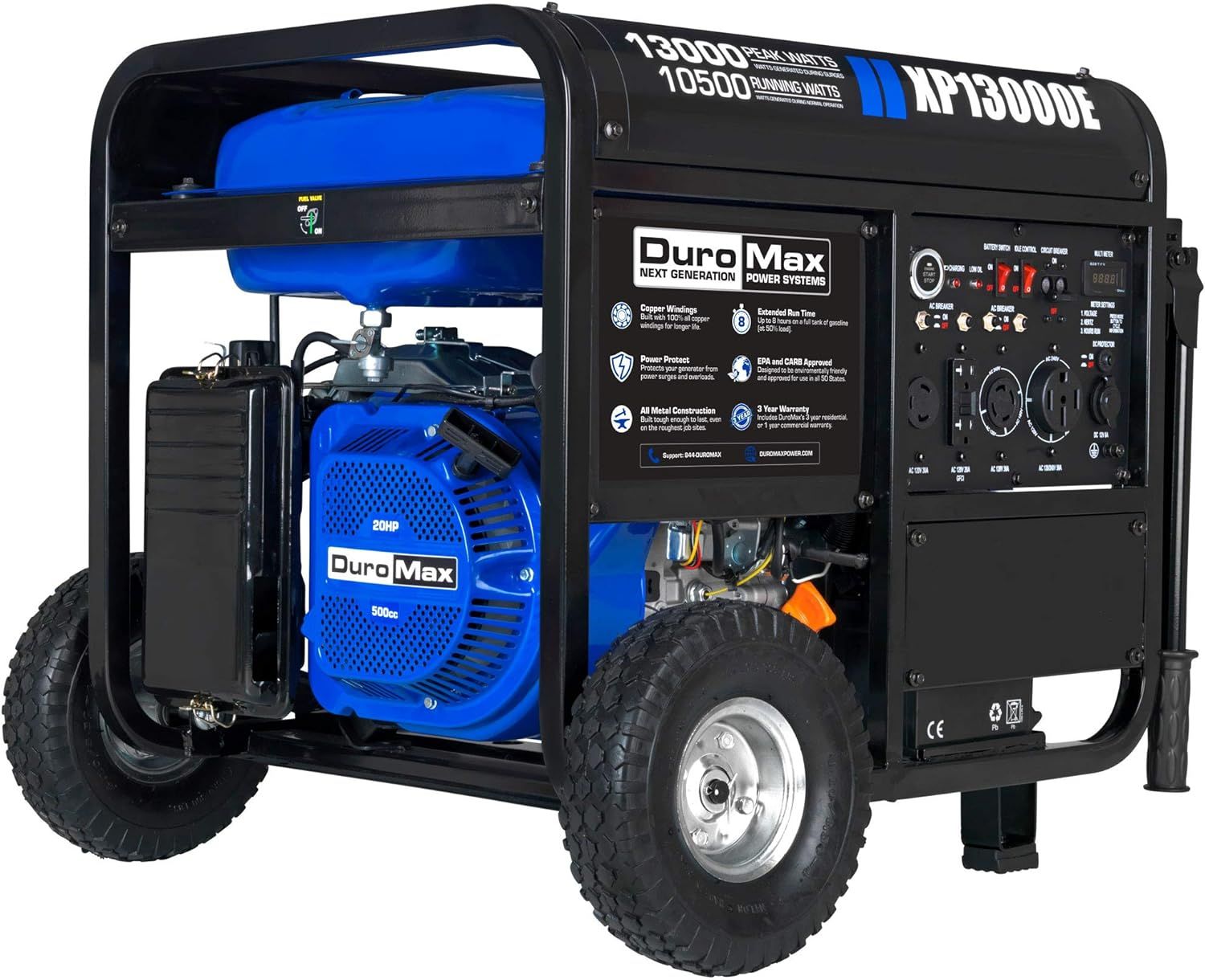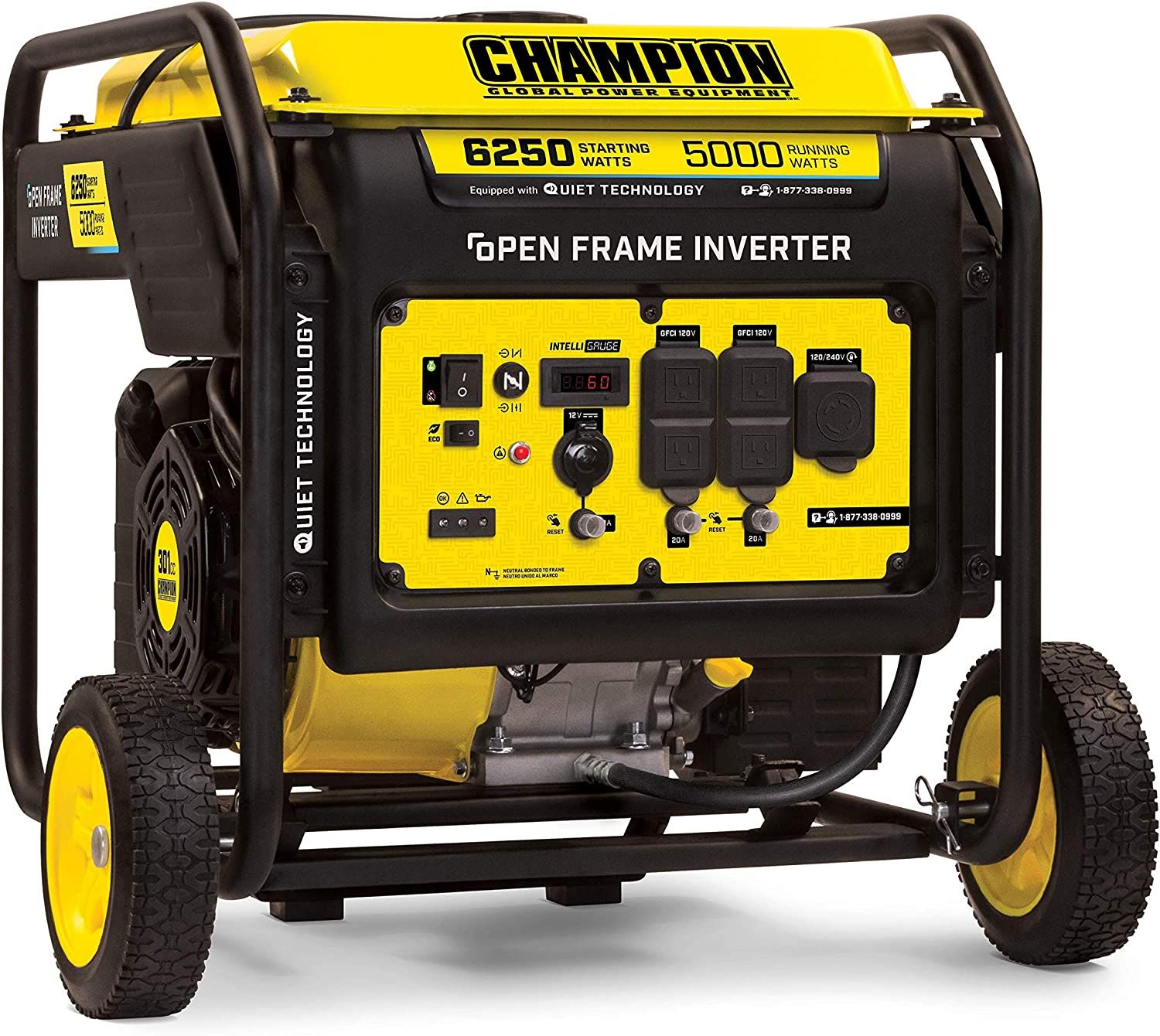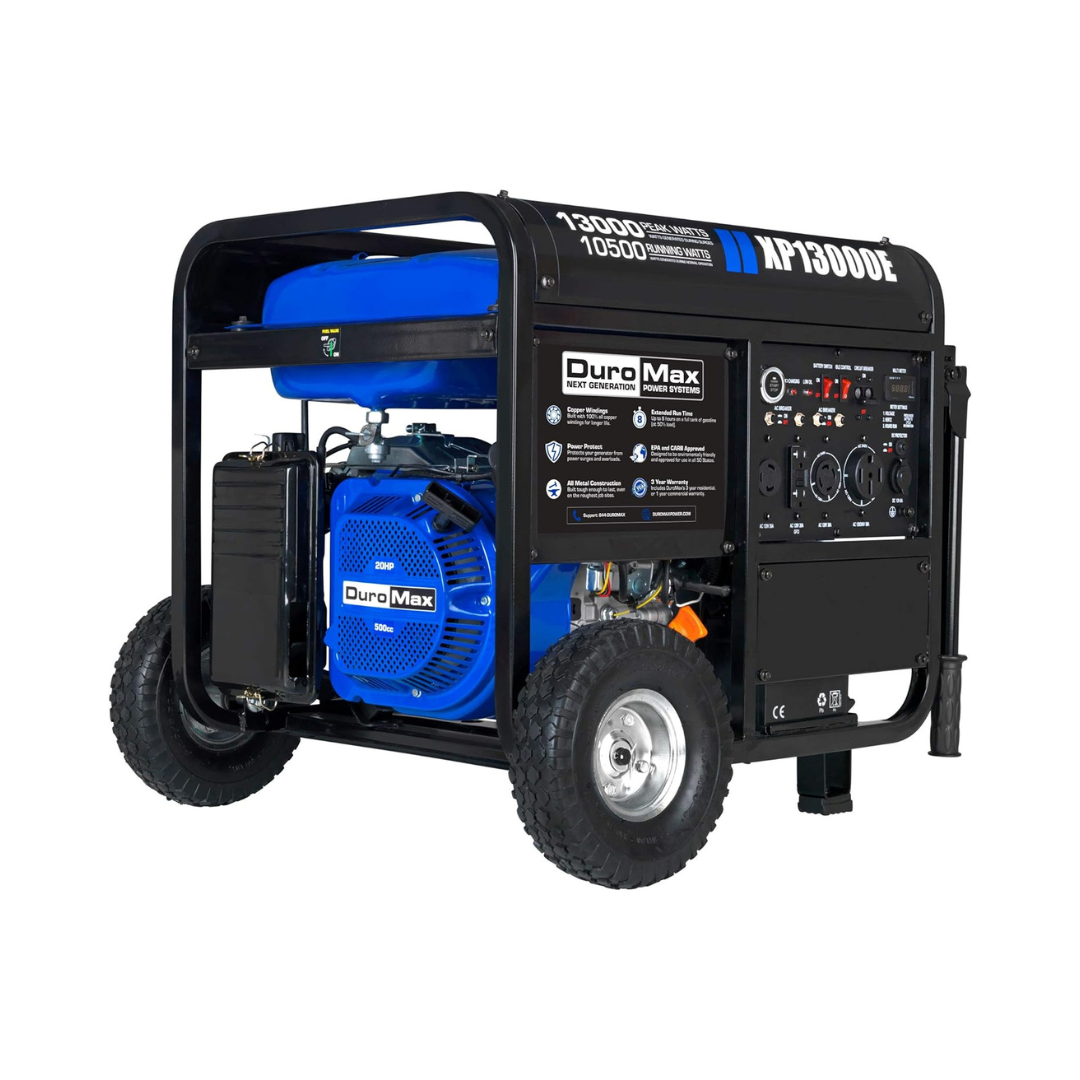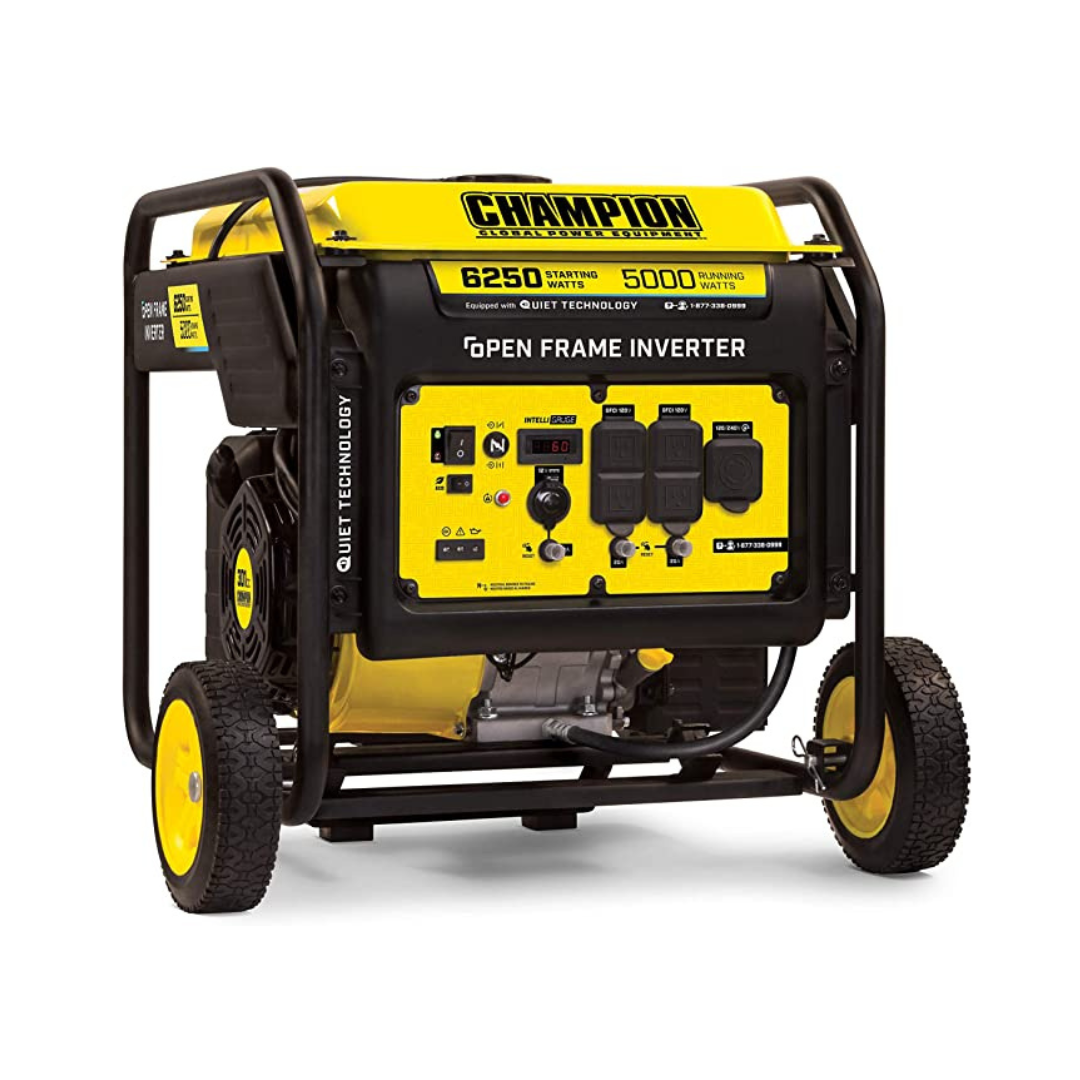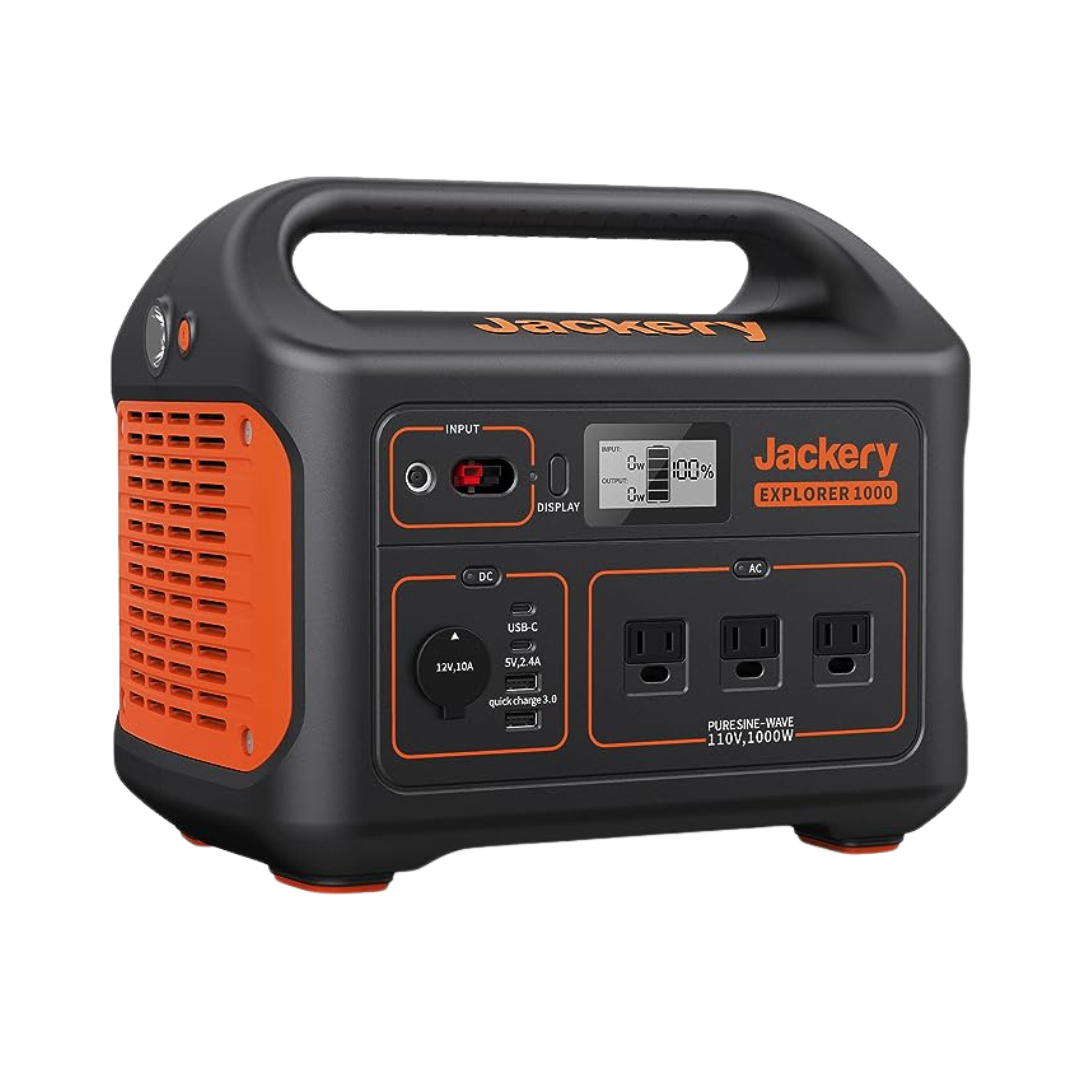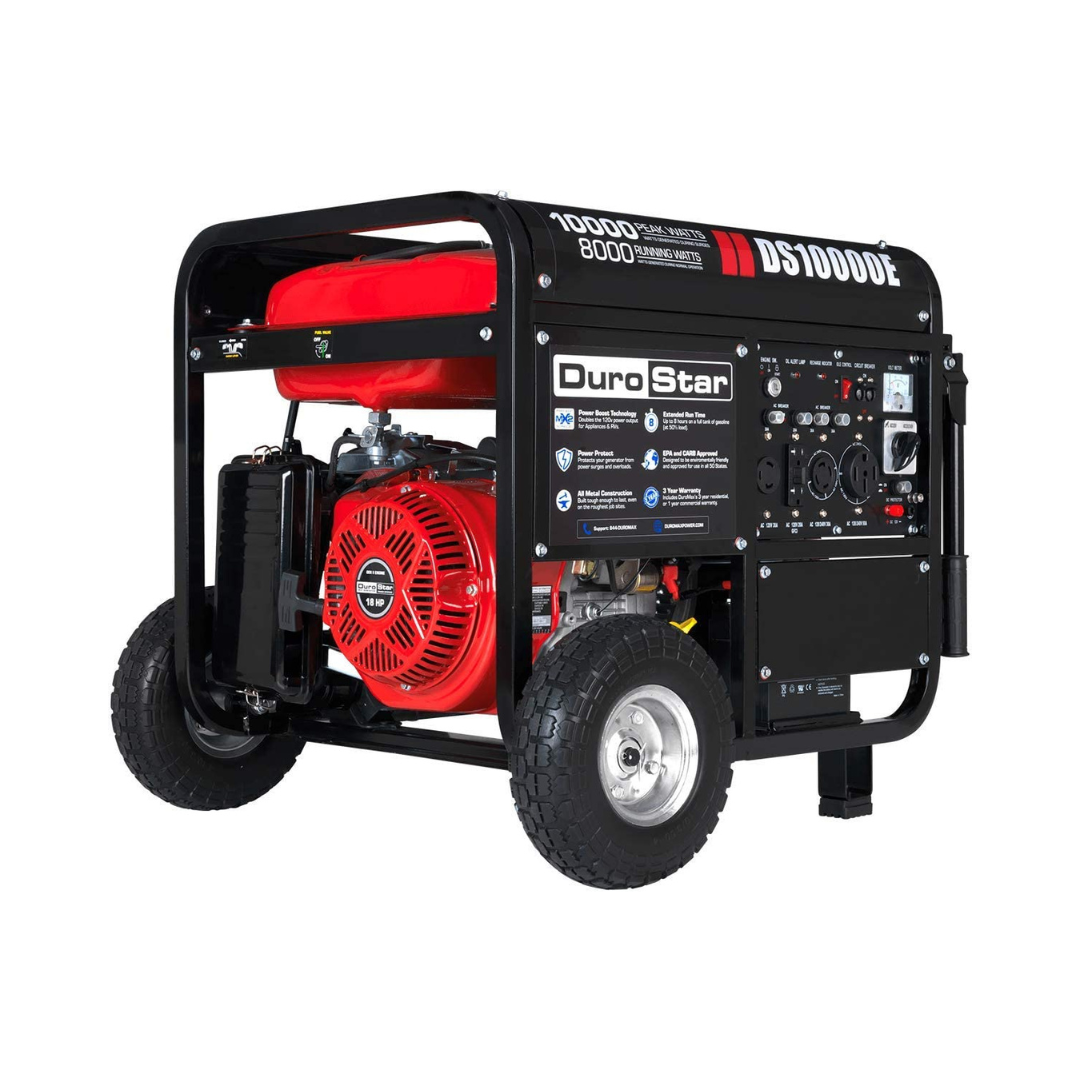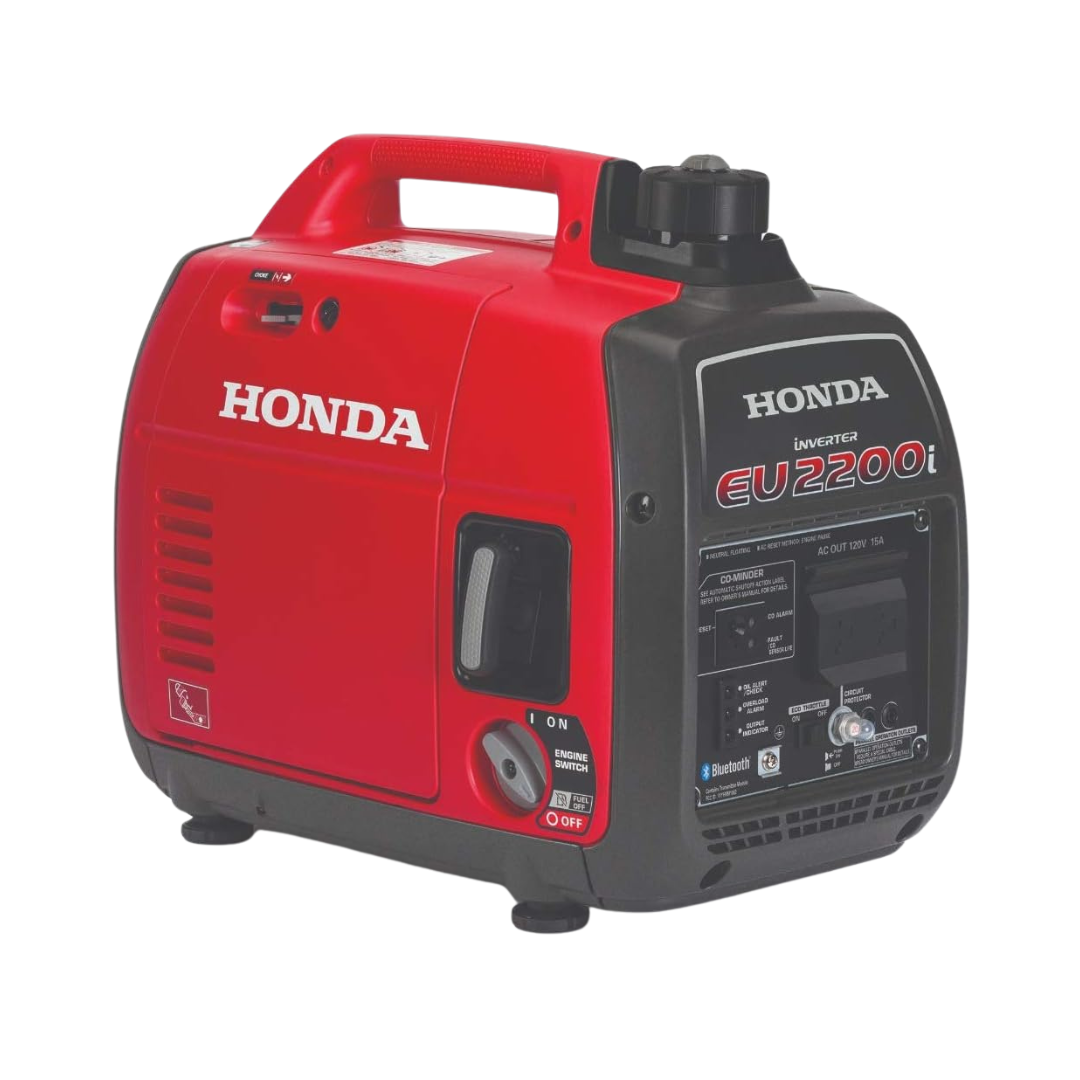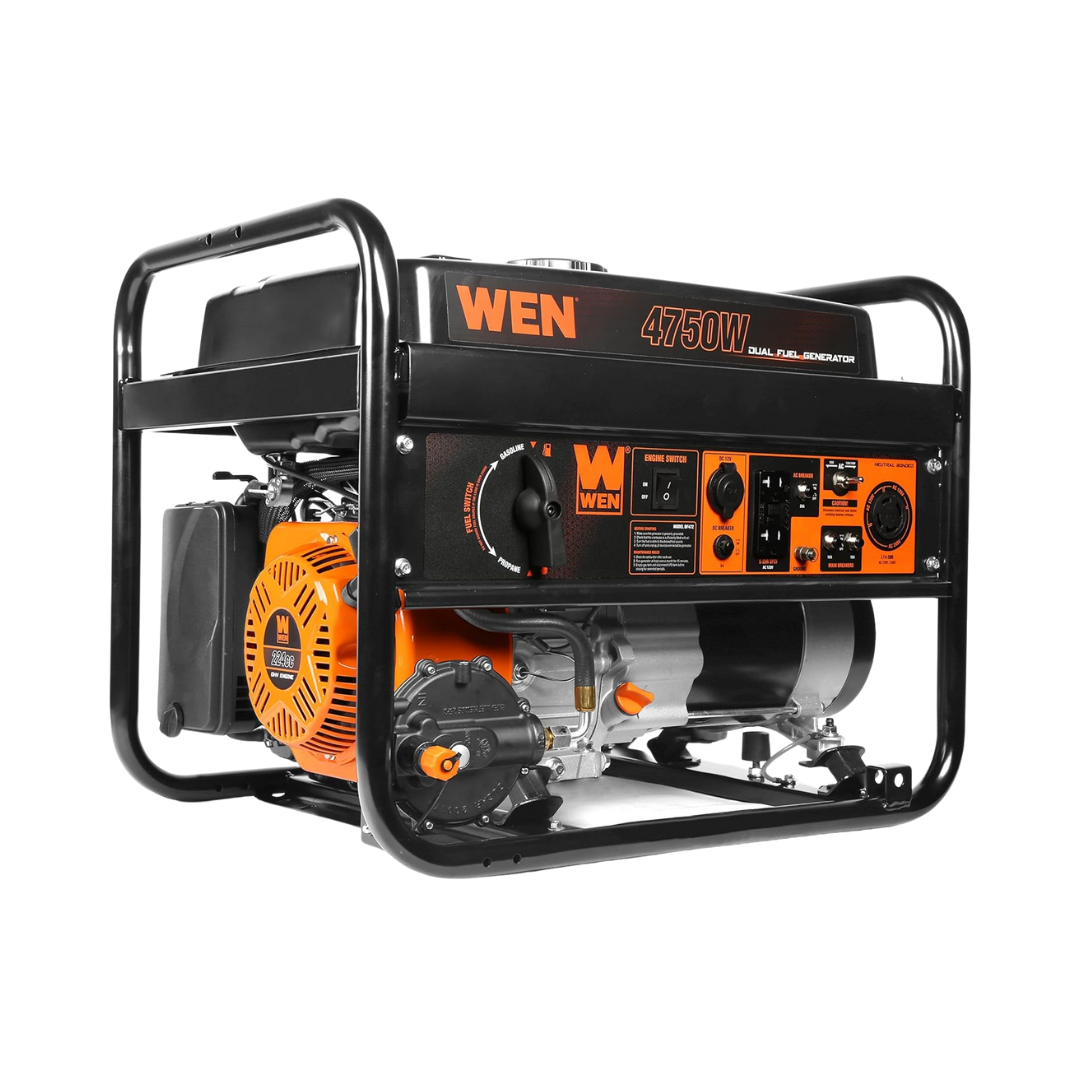We may be compensated if you purchase through links on our website. Our team is committed to delivering honest, objective, and independent reviews on home products and services.
Table of Contents: Our Top Recommendations | Buyer’s Guide | Home Generator Safety Tips | Home Energy Consumption Chart | FAQs | Additional Resources | Why You Can Trust Us
Home generators provide peace of mind that should you experience an outage, you can still operate your essential devices, including home appliances.
However, home generator models vary depending on their type, power level, and power source, and finding the right one for your specific needs can depend on your living situation. Typically, home generators cost anywhere from around $500 for small models that can power a few appliances to over $1,500 for larger devices that can re-power your entire home.
To help you select the best home generator for your needs, the This Old House Team put together this guide of the top home generators on the market. Our top pick is the DuroMax Electric-Start Generator, which provides a high power level and has five built-in outlets, making it powerful enough to power appliances like your refrigerator or washer/dryer.
You can also read our comprehensive generator buying guide to learn more about the most important factors for buying a generator.
Top 7 Home Generators
*Links below open to product retail page.
- Best Overall: DuroMax Electric-Start Generator
- Easiest To Start: Westinghouse Portable Generator
- Best Inverter Generator: Champion Power Equipment Open-Frame Inverter
- Best Portable: Jackery Portable Power Station
- Best Design: DuroStar Gas-Powered Portable Generator
- Best Medium-Sized: Honda EU2200ITAN Portable Inverter Generator
- Most Versatile: WEN DF472 Dual Fuel Portable Generator
Compare Top Home Generators
| Product | Wattage | Weight | Run Time | Warranty |
|---|---|---|---|---|
| DuroMax Electric-Start Generator | 10,500 running watts, 13,000 peak watts | 227 pounds | Up to 8 hours | 3 years |
| Westinghouse Portable Generator | 7,500 running watts, 9,500 peak watts | 192 pounds | Up to 11 hours | 3 years |
| Champion Power Equipment Open-Frame Inverter | 5,000 running watts, 6,250 peak watts | 121 pounds | Up to 13.5 hours | 3 years |
| Jackery Portable Power Station | 1,000 watts | 22 pounds | N/A | 2 years |
| DuroStar Gas-Powered Portable Generator | 8,000 running watts, 10,000 peak watts | 129 pounds | Up to 15 hours | 1 year |
| Honda EU2200ITAN Portable Inverter Generator | 2,200 watts | 44 pounds | Up to 8 hours | 3 years |
| WEN DF472 Dual Fuel Portable Generator | 3,850 running watts 4,750 peak watts | 103 pounds | Up to 11 hours | 2 years |
| Product | Wattage | Weight | Run Time | Warranty |
Best Overall
Good For: Homeowners looking for a powerful home generator that can run numerous apllinaces.
What Customers Are Saying
When looking through customer reviews of this product, we saw that several said that the DuroMax generator earned high ratings for its easy-to-understand instructions, reliability, and value. One reviewer said that it was able to power items around their house for 77 hours during a hurricane. Still, we saw that some unsatisfied users said that the generator didn’t work as advertised.
“I bought this generator to power the whole house and for ease of use since my wife works remote and I still go into the office. Has a push-button start (like new cars) and auto-chokes itself. Paired it up with a long cable to plug the generator into house inlet from my shed, and works like a charm. Power is out right now at my house, and the wife fired it up without an issue.” —Amazon Customer via Amazon
“Unit fired up immediately off the propane tank. Started monthly for four times running a few min. Each time. Now the unit just backfires. Bought a new regulator and checked/ gapped the spark plug. Rarely starts. When it does, it just surges continually. Emailed Duromax for help.” —Lovin’ Life <3 via Amazon
Easiest Generator To Start
Good For: Homeowners looking for a heavy-duty quick-start generator with a long runtime.
What Customers Are Saying
Our research showed that customers recommended tis generator for being affordable and easy to assemble. Several customers also liked its long runtime and industry-leading efficiency. However, we did notice some unsatisfied customers had issues with operating the generator’s battery or communicating with the company’s customer service team.
“Very quiet generator, easy to use. Took 20 minutes to install the wheels and the stand for it really easy with the supplied instructions. I love how it has the remote start, very easy to use without having to manually pull the cord every time. Took less than 5 minutes to pair the remote to the button. Push to start is also great. Overall very good generator” —A Person via Amazon
“Seemed like a good generator out of the box. Charged the battery and started very quickly the first time. 2 days later, the battery would not start the generator before dying. Pulled rope and ran generator with no issue for 20 minutes no load. The battery has worked since that time, however, since that time, the engine has not run steady. It revs up and down constantly. No load on the generator. I added a belt sander to power, and the revs continued to go up and down. Trying to contact customer service now.” —Sammy Frazier via Amazon
Best Inverter Generator
Good For: Those looking for a generator to run multiple appliances at once.
What Customers Are Saying
We saw that happy customers liked the Champion Power Equipment Open-Frame Inverter for its range of features, including its fuel shut-off valve, wireless remote, and multiple outlet options. Others liked it for its ability to deliver house-wide power with little distortion. We also noticed that unsatisfied customers said that getting in touch with customer support was difficult.
“It’s easy to operate and start, light enough to move around easily, and it has a 240V outlet if needed. The noise level is a little higher than I expected, but if I ever NEED to use it, I doubt I’ll care about it. Assembly is minor and easily handled with a metric socket set (6mm and 10mm if I remember right, it doesn’t say in the instructions) and an adjustable wrench.” —J. Brown via Amazon
“Not what I thought I was getting. The generator is VERY loud even on quiet mode. I was hoping for much less noise. Power-wise is fine. Assembly was easy. Started on the second pull no issues there. But just way too loud for a suburban environment.” —Robert via Amazon
Best Portable
Good For: Those looking for a portable generator that can run small devices.
What Customers Are Saying
We found that customers who liked the Jackery Portable Power Station frequently mentioned its durability, easy setup, and reliability, especially considering its cost. Out of the limited negative reviews, one user mentioned the product emitting a bad smell, and one mentioned an unsteady flow.
“Bought this almost a year ago and have used it in extremely harsh conditions that it definitely was not meant for, and it’s still running amazingly. Chargers fast off of solar, powers my fridge for several days, and literally saves the day on sooo many different occasions. This is easily one of the best investments you can make it always comes in handy maybe power is out from storms, or [your] car battery dies—the options are limitless. Couldn’t recommend it more, especially if you’re a nomad.” —Jakob L. via Amazon
“So many people were praising this unit for fast charging. What do they call fast? It takes at least 5 hours or more to charge it, and I only get 6 hours out of it when plugging in the basking UV lights and a security camera for my bearded dragon terrarium.” — MyRelief via Amazon
Best Home Generator Design
Good For: Homeowners looking for a low-noise, efficient generator that can still provide ample power.
What Customers Are Saying
Our team noticed that customers who liked the DuroStar Gas-Powered Portable Generator often mentioned its quick setup, ease of use, portability, and value. Of the unsatisfied customers, we saw a handful say that their order was missing parts and that they encountered a lack of customer support when they tried to resolve the issue.
“What a beast! This thing is a workhorse. Just started it right up and measured voltage with a meter. Both 120 and 240vac are consistent. The choke is a bit funny when starting, but not a deal breaker. Hoping it lasts!” — aquaticgem via Google
“The voltage is all over the place. Not stable, and it’s probably not a pure sine output. For example, my car will not charge from it as a result.” — keepherhappy via Google
Best Medium-Sized
Good For: Those looking for a medium-sized generator for small appliances or on-the-go spaces like RVs and campsites.
What Customers Are Saying
We found that customers who gave this product positive reviews were particularly impressed by its low noise level and easy startup. Several others commented on its excellent fuel efficiency. However, some reviewers did find it difficult to start and others said it ran out of fuel quickly.
“The generator is great. It will run my rooftop 9700 BTU without a soft start. I can run everything with the A/C except the microwave (which draws too much power). I can run the microwave without the AC on, small inconvenience. I really appreciate the small size and low noise level. After the initial start, which took about five pulls to get it going, now it starts on the first pull every time. It might be a little more expensive than other brands, but well worth it.” —John via Amazon
“What a great generator. However, powered my pickup camper overnight, hot day, 98 degrees, didn’t run generators on eco, and was out of fuel in 4 hours. Cooled down through the night to 80, and I switched to eco. The sound of the generator running from high to low was annoying. Otherwise, recommend getting an additional tank for fuel.” —RB via Amazon
Most Versatile
Good For: People with smaller homes looking for a heavy-duty generator.
What Customers Are Saying
We found that those who gave this generator positive reviews praised how simple it was to start and its durable, versatile design. Several others commented on its dual-fuel operation. However, some customers found that this product got damaged too easily, and others said it was overly loud.
“I bought this for my kids, and it hasn’t let them down. I also have a dual fuel and refuse to put gasoline in it. Propane can sit for a long time and still fire right up. With gas you have to run them, or you risk not being able to start them. This is a good smallish generator that will keep the [refrigerator] running and the lights on during a power outage. Used in conjunction with a transfer switch, you can have your gas stove, refrigerator, and most smaller loads available to you” —David Fenton via Amazon
“After assembling the unit and filling it with oil and gas, once I turned the fuel petcock to the on position, fuel began to spill out of one of the fuel lines that was busted at the junction. Good thing I saw it before attempting to start or things could have gotten messy. Since it was close to the valve, I was able to cut off the part of the line that was busted and reattach. Overall, about a 30–45 minute job. Once this was done, it started on the first try and ran fine. The bottom of the frame was bent in shipment as well, but the damage was only cosmetic. Time will tell if it’s a worthwhile investment, but not off to a good start.” —Greg via Amazon
What Do You Need To Know Before Buying a Home Generator?
Before buying a home generator, it’s important to consider how its design and specifications impact its performance. Before deciding on a home generator, you’ll need to consider factors such as the type, wattage, power source, and noise level to find the product that’s right for you. Read our guide below for more information about purchasing a home generator.
Home Generator Types
Home generators are available in a variety of models, with some of the most popular being home standby generators, portable generators, inverter generators, and portable power stations.
- Standby: Standby generators connect directly to your home’s electrical panel to automatically turn on during a power outage. Most models run on natural gas, which is convenient but expensive.
- Portable: Portable generators, including the Westinghouse Portable Generator, are compact models that can move to various locations around your home. While they’re able to power large appliances for hours, they don’t provide whole-home power like home standby generators.
- Inverter: Inverter generators, including the Champion Power Equipment Open-Frame Inverter, are similar to portable generators in that they have built-in wheels for easy transportation and a gasoline fuel source. However, they adjust their amount of power based on the needs of the items they’re powering. This results in better fuel efficiency and a lower operational noise.
- Portable: Portable power stations, including the Jackery Portable Power Station, power smaller home appliances, such as coffee makers and hair dryers. They have an electrical battery that’s charged using a wall outlet, car outlet, or solar panel.
Wattage
Wattage refers to how much power a home generator supplies. The available power of a generator is measured in running watts, which typically ranges from 1,000–10,000 watts, according to our research. The higher the wattage, the larger the appliances the generator can run. For example, the 7,500-watt Westinghouse Portable Generator can supply power to a few of your home’s essential appliances, while the 1,000-watt Jackery Portable Power Station can power small devices and appliances.
Fuel and Power Sources
Generators use gasoline, diesel, propane, solar energy, or natural gas.
- Gasoline: Gas generators are the most common, but we highly recommend you use them cautiously to avoid carbon monoxide poisoning. They’re powerful but expensive.
- Diesel: This fuel is less common than gasoline. However, they’re efficient, and you can store them for long periods without a stabilizer. They’re also less of a fire hazard than gasoline-powered generators.
- Propane: Propane is common in larger standby generators. Though it burns fairly cleanly, it’s not as powerful as other fuel sources.
- Solar power: Solar generators are clean alternatives to gas-powered generators, making them better for the environment. Another advantage is that you don’t need to purchase fuel. However, in the course of our research, we learned that solar generators must get several hours of direct sun exposure to operate. The solar charging time and power output a charge yields varies between models.
- Natural gas: This fuel source is exclusively for standby generators. Since it’s tied to your home’s natural gas line, you don’t have to worry about running out of fuel. However, it’s not very energy efficient.
Select machines are dual-fuel generators, meaning they can run on more than one of these fuel sources.
Generator Noise Levels
The noise level of a home generator varies depending on its running wattage and power source. Some generators list their decibel ratings in their product descriptions. For example, we determined that the Champion Power Equipment Open-Frame Inverter runs at about 69 decibels, which is similar to the sound of a vacuum cleaner.
How To Use a Home Generator Safely
Using a generator can be dangerous if you don’t take the proper precautions. Here are some critical steps you should take to ensure that you’re using your home generator safely:
- Don’t operate a gas generator in an enclosed area, such as a garage or shed, as this can lead to carbon monoxide buildup.
- Use a fuel stabilizer when you’re storing gasoline for an extended period of time, as destabilized gas can be a fire hazard.
- Operate your generator at least 20 feet away from your home to keep any carbon monoxide from making its way into your home.
- Install a transfer switch on your generator transfer between grid power and generator power. Using a transfer switch reduces the risk of electrocution and appliance damage. If you don’t feel confident in your ability to install a transfer switch, contact an electrician for you.
- Be cautious when you’re refueling your generator. Don’t refill it when it’s hot or near a heater or another warm object.
- Keep your generator at least five feet away from surrounding surfaces. This reduces the risk of these surfaces overheating, which could cause the items on them to catch on fire.
- Test your generator when you first get it to make sure that it runs properly. You don’t want to wait until an emergency in case it doesn’t work or you don’t understand how to use it.
How Much Energy Do Common Household Items Use?
While portable generators may provide enough power for lights and small electronics, they can’t power your entire household. The chart below estimates how much electricity common household appliances, devices, and equipment consume so you can find whole-home generator with enough wattage to meet the power needs of your household.
Energy Consumption of Household Appliances, Devices, and Equipment
| Item | Power |
|---|---|
| Window air conditioner | 400-1,200 watts |
| Aquarium | 50-1,200 watts |
| Ceiling fan | 65-175 watts |
| Coffee maker | 600-1,200 watts |
| Desktop computer | 125-200 watts |
| Dryer | 2,000-6,000 watts |
| Laptop | 20-75 watts |
| Microwave | 700-1,500 watts |
| Portable heater | 750-1,500 watts |
| Refrigerator | 500-1,000 watts |
| Sump pump | 800-1,000 watts |
| Tablet | 10-20 watts |
| Television (42-inch) | 200-300 watts |
| Toaster oven | 1,000-1,200 watts |
| Vacuum cleaner | 300-1,500 watts |
| Washing machine | 500-1,200 watts |
| Water heater | 4,000-5,000 watts |
| Well pump | 750-1,000 watts |
| Item | Power |
Home Backup Generator FAQs
What type of home generator do I need?
The home generator you need depends on a variety of factors, including the type and wattage of the appliances you want to power.
For example, if you want to power small appliances, such as a coffee maker or television, we recommend investing in a portable power station.
However, if you want to power large appliances or your entire home, look into standby or whole house generators.
How much does a home generator cost?
While the price of a home use generator varies depending on the model, our research showed that most cost between $500 and $1,000.
How do portable generators create power?
Portable generators don’t actually create power. Instead, they turn chemical or mechanical energy into electrical energy by burning gas (usually liquid propane) to rotate an alternator, which induces an electrical current. This results in a power output that’s compatible with household appliances and devices.
Additional Generator Resources and Guides
Over the years, our power and generator experts here at This Old House have developed numerous resources for homeowners, contractors, and road-warriors. We’ve compiled a list of our most popular backup power and disaster preparedness guides below.
Whether you’re looking for information about different types of power generators, setup and installation, generator troubleshooting, severe weather preparation, or other tips, these resources can help:
- The 5 Best Portable Generators
- How To Install an Automatic Standby Generator
- Power on Demand: How It Works
- How To Wire a Portable Generator
- How To Install a Manual Transfer Switch for a Portable Generator
- How To Install a Transfer Switch for a Portable Generator
- 14 Supplies To Prepare for a Blizzard
- Disaster Supply Kit: How To Prepare for Severe Weather
- How To Provide Backup Power Without Gas
Our Methodology
This Old House has empowered homeowners and DIY-ers for more than four decades with top-notch home improvement advice in the form of television programs, print media, and digital content. Our team focuses on creating in-depth product and service review content. To date, we’ve published over 1,600 reviews on products in the home space, including power tools, outdoor equipment, major appliances, kitchen gadgets, electronics, and more that focus on product quality and helpfulness to our readers.
To provide our readers with the best recommendations possible, we rely on several key sources of information to help guide our selection process.
Initial Research: Our research process began by generating a list of garbage disposals with a significant number of verified buyer reviews and an average customer review rating of 4–5 stars. We looked at positive and negative reviews alike, focusing on information from both satisfied and critical buyers.
Expert Insights: To complement our in-house expertise, our team looked at reviews and videos from trusted publications and independent testers, spoke with subject matter experts, and drew insights from reader contributions.
Final Product Selection: We then began fine-tuning our list by replacing older models with the latest versions and eliminating any discontinued models. From there, we compared each model’s feature set to create a final shortlist, selecting the best-in-class options for various buyers, budgets, and scenarios.
Once we conclude our research, we craft a comprehensive, user-friendly article of recommended products and additional information to help our readers make the right purchase.
Questions or Comments?
To share feedback or ask a question about this article, send a note to our team at reviews@thisoldhousereviews.com.
